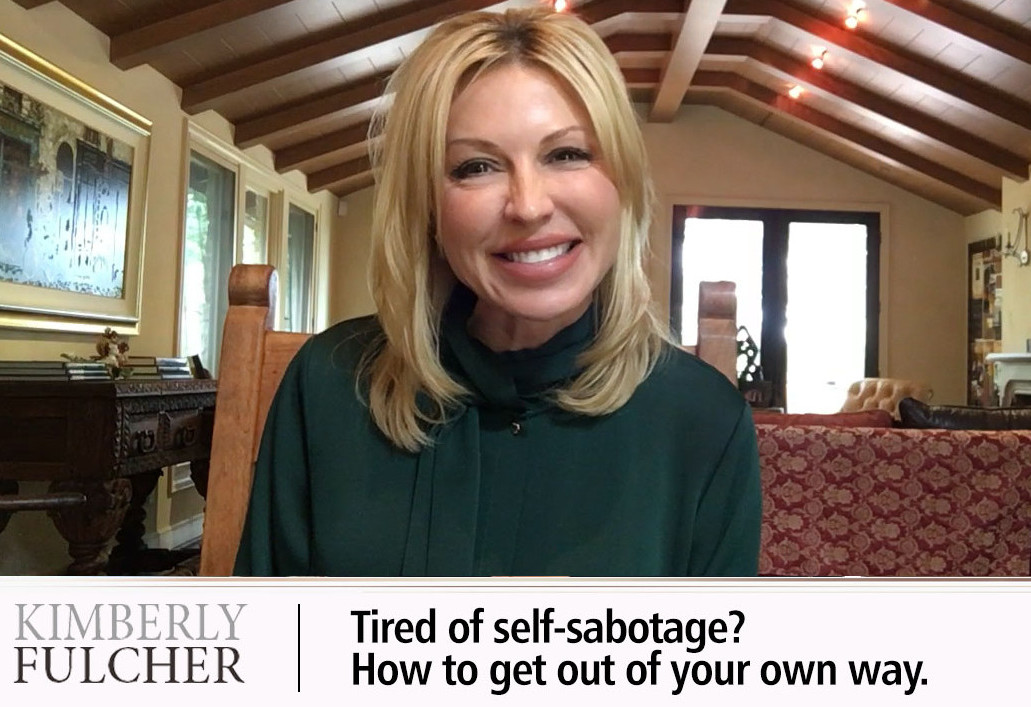You messed up.
Again.
You broke your promise, and let yourself down. Now you’re hanging your head in shame, hating on yourself, and obsessing about your problem.
Stop it.
Pick your head up. No more obsessing, and no more saying mean stuff to yourself. That’s not going to help anything. You’re not a screw-up, and you’re not destined to fail.
There’s nothing wrong with you.
But there could be something wrong with the way you’re doing your life.
If you keep getting in your own way, creating your own problems, or stopping yourself just before you succeed, this blog’s for you.
I’ve been working as a life coach for more than a decade. I’m in business because most people need to change something. (This human thing is not for sissies.) One of the most maddening problems I help clients overcome is self-sabotage.
- You’re up for a promotion. It hinges on an important presentation. You don’t know why, but you procrastinate until the last minute. You end up doing a mediocre job on it. Bye-bye promotion.
- You’re beginning to feel really close to someone special. Out of nowhere, you start a fight over something trivial. See ya closeness.
- You’re at an important event. These are new peers, and you want to make a good impression. Somehow one too many drinks get into your hand (and down your hatch.) You get super drunk, and make a fool of yourself. Good impression made? Yeah, not so much.
Recognize yourself? Me too. In fact, every one of these examples is from my own life. ☺
There’s a reason you sabotage when you do. You’re wired for survival. Sabotage behavior has to do with that wiring. In this week’s episode of GrooveTV we’ll get down to the bottom of why you keep getting in your own way, and I’ll help you stop doing it once and for all. Press PLAY already. Aren’t you ready to stop short circuiting?
Step 1: Name your need.
Let’s talk a bit more about that wiring I mentioned earlier. You have five emotional survival needs. We all do. (I wrote about these guys in detail in my book Remodel Your Reality.)
You need to feel;
- SAFE: secure, predictable, and certain.
- FREE: autonomous, and able to direct your own life.
- LOVED/CONNECTED: accepted, and as if you belong.
- COMPETENT: capable, and able to handle what needs to be handled.
- WORTHY: deserving, good enough, and like you matter.
Your needs aren’t something you consciously think about, but they drive your behavior. (So it’s important to spend some energy understanding how they work.) On an unconscious level, you’ve created rules that let you know when your needs are being met. And when they’re not being met.
When one of your rules is broken (which threatens your need), you’ll behave in a way that defends it. Even if that behavior flies in the face of your own interests. (Or makes you look like a raving lunatic.)
Wanna know what’s worse? When you’re going for something, and the thing you’re going for threatens one of your needs, you’ll make sure you don’t get it.

When what you want conflicts with what you need, what you need wins. Always.
Tweet this!
- Remember that promotion? Deep down inside I was afraid the new job would take over my calendar as soon as I got it. That threatened my need for freedom. Big time. My lips were saying promotion. My actions were saying thank-you-no-thank-you.
- In the early part of my marriage I would start stupid fights. Jay is amazing. I’d never felt that degree of love and acceptance from a partner. Being embraced so fully fired off every do-I-deserve-it love trigger I had. Happily, 18 years later I’ve grown quite comfortable with all that love.
- Yes, I own the drunk-party thing too. I want to be accepted just like the next girl. My fear of rejection had me guzzling cabernet to quiet my nerves, and ultimately SO NOT making a good impression.
Any time you act against your own interests, or react out of proportion to what circumstances warrant, it’s a good bet that one of your needs has been triggered. When a need is triggered, it literally hi-jacks you. It takes the wheel of your behavior and makes you do things that don’t make any sense.
Think about your situation. Which need is driving your behavior? (Is it safety, freedom, love, competence, or worth?) While several of these guys might be at play, we want to work with the one that has its finger on your trigger (and it’s hands on your wheel.) You need to take back control. Left unattended this little dude will drive you right off the cliff.
Let’s stop him, okay?
Step 2: Uncover your satisfaction strategies.
Your needs are not good or bad. They just are. The way you meet them can be good or bad though. That’s what we need to dig into. You’ve lived a lot of decades. Just think about what you’ve survived. (It’s kind of amazing, isn’t it?)
While you were surviving, your brain was cataloging and creating. It’s developed strategies to satisfy your needs based on what worked (and didn’t) in your past. Trouble is, (again) you weren’t consciously involved in this process.
I had a client whose story will illustrate this beautifully. Client X grew up in a house of nine children. (Yikes, right?) When she was a kid, the only way she really felt loved was when her parents paid individual attention to her, but that was a rare thing. She learned that she got a lot of attention (AKA love) when she behaved badly. So you started behaving badly. All the time. Attention secured.
This worked for her when she was little, but the adult version wasn’t doing her any favors. Even though she was talented, her disruptive behavior at the office was about to get her fired. In fact, she was on her final chance as a result of her fits and tantrums. I’d been hired to work with her as her last resort.
What we uncovered was that this brilliant adult woman was working with old unconscious rules to meet her need for love. The office was a chaotic environment. Her boss didn’t have a lot of time for her. So she kept bringing him problems to get his attention. Her need for love was driving her behavior.
We didn’t get rid of her need for love and attention. (It’s not possible to get rid of a need.) We changed the way she was going about getting love and attention. She set up a weekly 1×1 with her boss, where she would get his undivided attention. (She also learned that attention for a problem solved was much more advantageous than attention for a problem raised.)
Thankfully, by getting to the root of the need driving her behavior (love/attention) and the strategy she was using to meet it (pitching a fit) we were able to turn her situation around. When I last spoke to her she was happily employed, and tantrum free.
Your turn.
Think about your present situation, and the need you named as your driver. What’s your current strategy for getting that need met? Write it down. Make sure you understand how it plays out (every ugly step of it).
Got it? Good. Let’s give it a makeover…
Step 3: Upgrade your response. (In a way that still meets your need.)
One way or the other, your needs will be met. They don’t really care if your strategies for meeting them are empowering – or not. So you need to care.
When you discover a strategy that isn’t serving you, there’s no reason to beat yourself up over it. Just upgrade your strategy. It’s that simple. We’ll do your first upgrade right now, together.
Take the satisfaction strategy you just discovered in step 2. (This means you have to do the homework.) Now, answer three questions.
- What has to happen to make you feel insert your need?
- What’s happening now that’s threatening this need?
- What has to change?
Initially, it can be difficult to nail down what has to happen to meet your need. If you’re having trouble with it, try asking yourself when you’ve felt the most (safe, free, competent, loved, worthy) in your life. Then recreate those conditions in your upgraded strategy.
There is no wrong way to do this. (Except not to do it at all.) Experiment. Be on the lookout for sabotage triggers. You’ll be surprised to find that the more you practice, the better you’ll get at catching yourself way before you short-circuit. Even better than that, you’re gonna be great at getting what you want.
I know this can feel complicated. It is an involved process, but it’s a critical one. The more you pay attention and practice, the better you’ll get. Take control. You can.
That’s it for the week. Remember that I never want you to blindly take my word for anything. Only you know what’s right for you. I just happen to have a few coaching tools that can help you get closer to that wisdom. Give this lesson’s advice a test drive in your life, and let me know how it goes. There are three ways for us to interact.
- Comment in the comments section below.
- Chat with me on on Instagram, Facebook or LinkedIn.
- Email me if you have something more private you’d like to ask. My personal email is kim@kimberlyfulcher.com. I’m the only one reading your messages, and it’s always me answering them.
My mission is your empowerment. That’s why I’m here. If you haven’t already joined my community, please do it by entering your email (www.kimberlyfulcher.com). Until we meet again, know that life is happening for you.
And you got this!
XO
Kim



